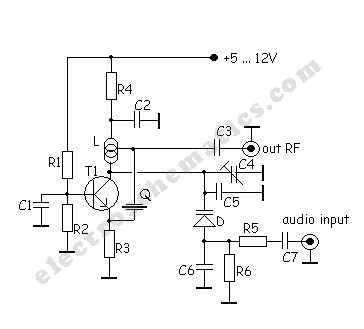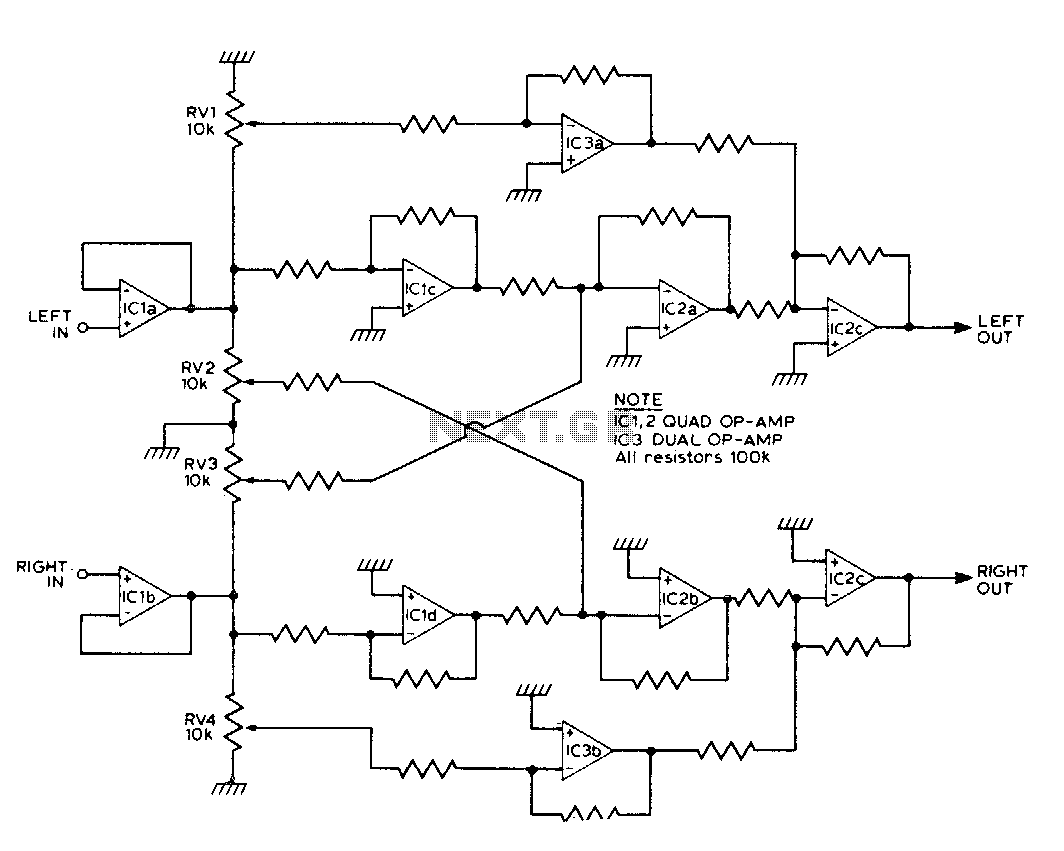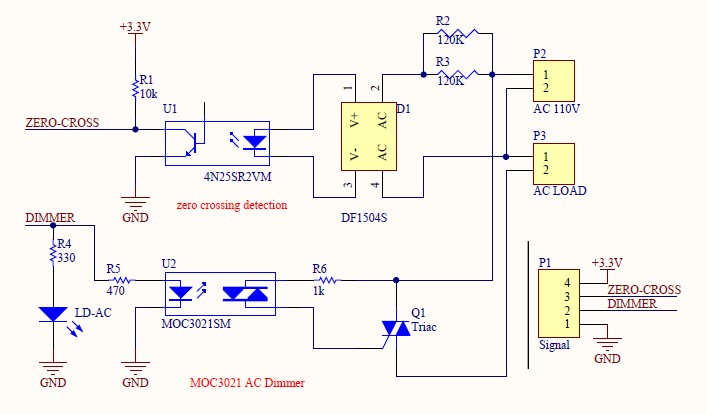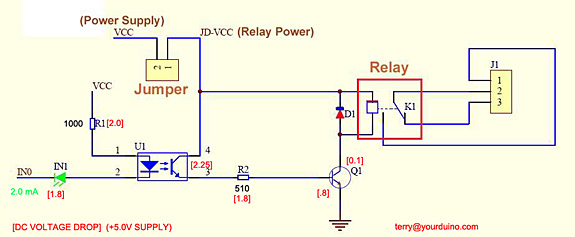
DIY Arduino Nebulophone Synth
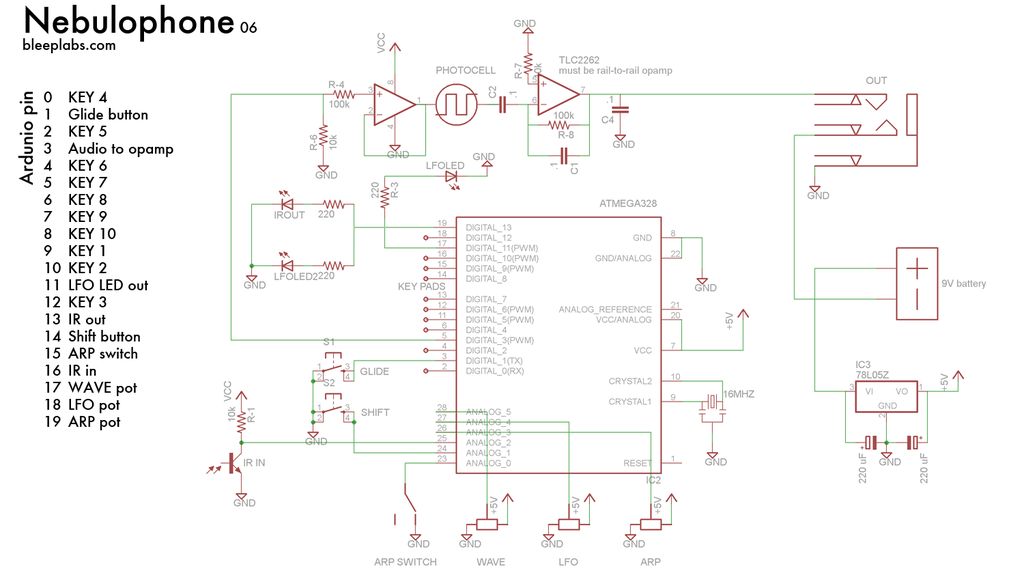
The initial intention was to purchase a Nebulophone; however, the price exceeded the budget. It was discovered that programming an AtMega 328 using ArduinoISP was a feasible alternative. If the code was compatible with Arduino, it was logical to utilize the Arduino as a Nebulophone, despite it being somewhat inefficient to use the Arduino for this purpose, as it simplified the circuit. A DoAnything Shield was built, providing access to any desired pin. Upon reviewing the schematic, it became evident that there were several omissions, such as the placement of the stylus and the keypads. After a series of emails with Dr. Bleep, these issues were clarified. The circuit requires one SPST or SPDT slide switch (any type of switch that can toggle between two positions until pressed again is suitable, whether it be toggle, rocker, etc.; the second connection is not utilized). Additionally, it includes one LED and photocell assembly. While a specific assembly was sourced from a website, it was noted that a cheaper, albeit untested option was available on the same site. Alternatively, a DIY assembly can be created by bending an LED over a photocell with a resistance ranging from 10k to 200k and covering it with black tubing. The exact resistance of the previously used photocell was uncertain, but it functioned adequately.
The circuit design involves an AtMega 328 microcontroller programmed via ArduinoISP, which serves as the core component for the Nebulophone functionality. This microcontroller offers flexibility and programmability, enabling the creation of sound output similar to that of a Nebulophone. The DoAnything Shield expands the capabilities of the Arduino by providing multiple GPIO (General Purpose Input/Output) pins, allowing for versatile connections of various components.
The circuit integrates a SPST or SPDT slide switch, which serves as a user interface element, enabling the user to toggle the device on and off. The choice between SPST and SPDT does not impact functionality, as the second terminal of the SPDT switch remains unused. This switch can be implemented in various forms, such as toggle or rocker switches, providing options for user preference.
The LED and photocell assembly is critical for the light-sensing functionality of the circuit. The LED emits light, which is detected by the photocell, allowing for interaction based on light levels. The suggested construction of this assembly involves a simple bending of the LED towards the photocell, encapsulated in black tubing to prevent interference from ambient light. The resistance of the photocell plays a significant role in determining the sensitivity of the light detection, and a range of 10k to 200k is typically effective for this application.
Overall, this circuit provides a cost-effective and customizable solution for creating a Nebulophone-like device, leveraging existing Arduino technology and enabling further exploration into sound synthesis and user interaction through light sensing.I originally wanted to purchase a Nebulophone but, my El-Cheapo price range didn`t like the tag. I realized that I could program my own AtMega 328 by using ArduinoISP Then I found out that if the code was Arduino compatible, why not just use the Arduino as a Nebulophone Well it was kind of a waste of Arduino but at least I could simplify circuitr y. I recently built my DoAnything Shield and could now have access to any pin I wanted. I looked at the schematic and realized that Dr. Bleep had left plenty of things missing such as where did the stylus go and, where were the keypads and so I emailed him and after a long string of emails everything was cleared up. 1 SPST/SPDT slide switch (Any type of switch that can move from one position to another until pused again work (Toggle, Rocker, etc.
) It doesn`t matter whether it is SPST or SPDT the second connection is nothing. ) 1 LED and Photocell assembly (I got mine from here but I didn`t realize that the same website had this which is much cheaper although untested. You could also make your own by bending an LED over to a photocell that can range from 10k to 200k. and then covering it with some black tubing. I`m not sure the one I had is exactly 10k to 200k but it worked. ) 🔗 External reference
The circuit design involves an AtMega 328 microcontroller programmed via ArduinoISP, which serves as the core component for the Nebulophone functionality. This microcontroller offers flexibility and programmability, enabling the creation of sound output similar to that of a Nebulophone. The DoAnything Shield expands the capabilities of the Arduino by providing multiple GPIO (General Purpose Input/Output) pins, allowing for versatile connections of various components.
The circuit integrates a SPST or SPDT slide switch, which serves as a user interface element, enabling the user to toggle the device on and off. The choice between SPST and SPDT does not impact functionality, as the second terminal of the SPDT switch remains unused. This switch can be implemented in various forms, such as toggle or rocker switches, providing options for user preference.
The LED and photocell assembly is critical for the light-sensing functionality of the circuit. The LED emits light, which is detected by the photocell, allowing for interaction based on light levels. The suggested construction of this assembly involves a simple bending of the LED towards the photocell, encapsulated in black tubing to prevent interference from ambient light. The resistance of the photocell plays a significant role in determining the sensitivity of the light detection, and a range of 10k to 200k is typically effective for this application.
Overall, this circuit provides a cost-effective and customizable solution for creating a Nebulophone-like device, leveraging existing Arduino technology and enabling further exploration into sound synthesis and user interaction through light sensing.I originally wanted to purchase a Nebulophone but, my El-Cheapo price range didn`t like the tag. I realized that I could program my own AtMega 328 by using ArduinoISP Then I found out that if the code was Arduino compatible, why not just use the Arduino as a Nebulophone Well it was kind of a waste of Arduino but at least I could simplify circuitr y. I recently built my DoAnything Shield and could now have access to any pin I wanted. I looked at the schematic and realized that Dr. Bleep had left plenty of things missing such as where did the stylus go and, where were the keypads and so I emailed him and after a long string of emails everything was cleared up. 1 SPST/SPDT slide switch (Any type of switch that can move from one position to another until pused again work (Toggle, Rocker, etc.
) It doesn`t matter whether it is SPST or SPDT the second connection is nothing. ) 1 LED and Photocell assembly (I got mine from here but I didn`t realize that the same website had this which is much cheaper although untested. You could also make your own by bending an LED over to a photocell that can range from 10k to 200k. and then covering it with some black tubing. I`m not sure the one I had is exactly 10k to 200k but it worked. ) 🔗 External reference
